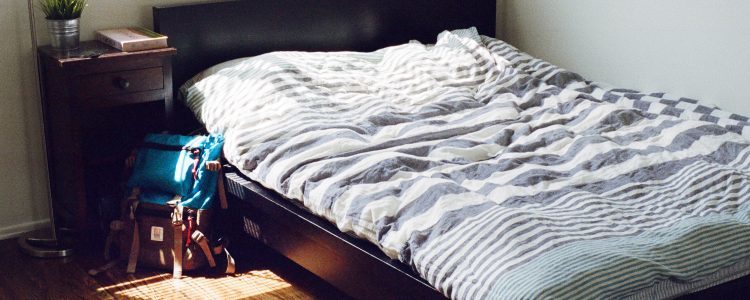Bed bugs are found worldwide and are a significant problem for many travellers. They are often found in hostels but can also make their way to quality clean hotels, taking a ride in suitcases and backpacks. They have even made it onto planes! Recently it was reported that a British airways passenger plane was taken out of service after there was an outbreak of bedbugs on a flight from the US to London. Passengers claimed they were bitten and spotted eggs.
When fully grown, bed bugs are around 4–6mm in length, a flat oval shape and are visible to the naked eye. Bed bugs live in cracks and crevices within walls and furniture such as bed frames and mattresses – hence their name!
Bed bugs can easily be spread from guest house to hotel. Unknowingly, travellers can easily transport bedbugs from one place to another in clothing and bedding packed in suitcases and backpacks. They can also live for up to a year without feeding, so can remain in their new found home quite comfortably for some time without a host to feed on so they are very difficult to get rid of.
Bed bugs mainly bite at night when a person is sleeping. The combination of body heat and carbon dioxide attracts these tiny bugs to bite exposed skin. They usually bite on the face, neck, arms and hands; feeding on blood. Bed bugs are not dangerous and are not known to carry disease but some people develop itchy red bumps which can last several days.
How you can manage and prevent bed bugs:
• Sleep in your own sleeping bag liner or sheet, preferably impregnated with insecticide
• If you suspect your bed is infested- treat the sheets with a fabric insecticide treatment, just make sure your bedding is totally dry before climbing in
• For extended trips you could consider packing a mosquito net treatment kit which has the active ingredient of the spray. By diluting this down you can make up more spray as you go (5ml to 100ml of water)
• Plan where to stay, check reviews and recent complaints of bedbugs at hotels
• Be aware of a musty odour (from bugs scent glands) in the room. This may be a sign of a large infestation
• Store your suitcase or backpack on a stand far away from the bed
• Look out for black spots on bedding; these will be blood spots from squashed bugs after feeding
• Bites from bed bugs are often in straight lines as opposed to mosquito bites which are more random. This will help you to identify whether it mosquitoes or bed bugs that have bitten you
• Pack any dirty clothes that may be infested in a tight sealable bag
• Sleep under an impregnated mosquito net
• Clean bedding in hot water and dry on the highest dry setting
• A mild steroid cream such as hydrocortisone and some antihistamines can help manage to manage any itching
For the full range of Bed Bug Protection – click here.


No Comments
Be the first to start a conversation